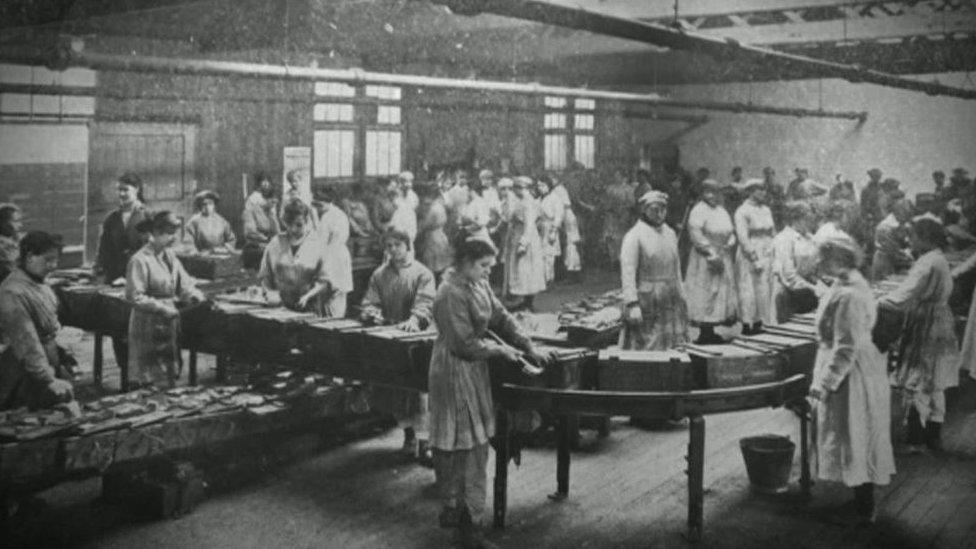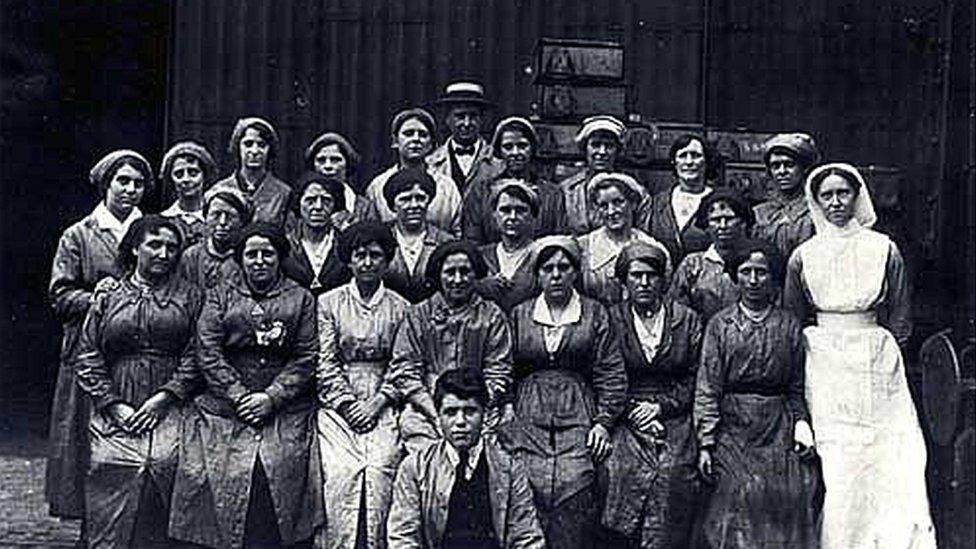Centenary service for Barnbow WW1 munitions blast factory
- Published

Women who worked at the munitions factory became known as the 'Barnbow Lasses'
A service is being held to commemorate 100 years since an explosion which killed 35 women at a munitions factory in Leeds.
The blast happened in a fusing room at the Barnbow Munitions factory in Crossgates on the night of 5 December 1916.
It was the single largest loss of life in the history of Leeds.
Historians, students and relatives of those who died will attend the service at Barnbow Memorial in Manston Park.
A shell exploded in Hut 42 just before 22:30 on 5 December 1916, killing 35 women and injuring many more.
Organiser Bob Lawrence, of East Leeds Historical and Archaeological Society, said: "Every year we quite rightly commemorate the soldiers who gave their lives in service, but we don't see services for female munitions workers who also gave their lives for their country.

Around 16,000 people were employed at the factory, mostly women
"An awful lot were injured but an awful lot also suffered psychological trauma.
"We [should] think of these women and girls as soldiers too.
"Without their contribution, the outcome of World War One could have been very different."
The accident is thought to be one of the biggest female losses of life in World War One but the deaths of the "Barnbow lasses" were barely reported because of wartime conditions.
The site was made a scheduled historic monument in October.

Barnbow 'canaries'

Because it was wartime, the deaths went unreported with the women listed in death notices as "killed by accident"
The 400 acre (160 hectare) factory was built in 1915 and employed almost 17,000 workers at one time
93% of workers were female
The chemicals turned workers' skin yellow, earning them the "canaries" nickname
Subsequent explosions in March 1917 and May 1918 killed two further women and three men
The site was closed following the 1918 Armistice, having produced almost 47,000,000 shells. The last buildings were demolished in 1933
The site is now open greenbelt land

- Published10 October 2016

- Published21 June 2016

- Published2 June 2014
